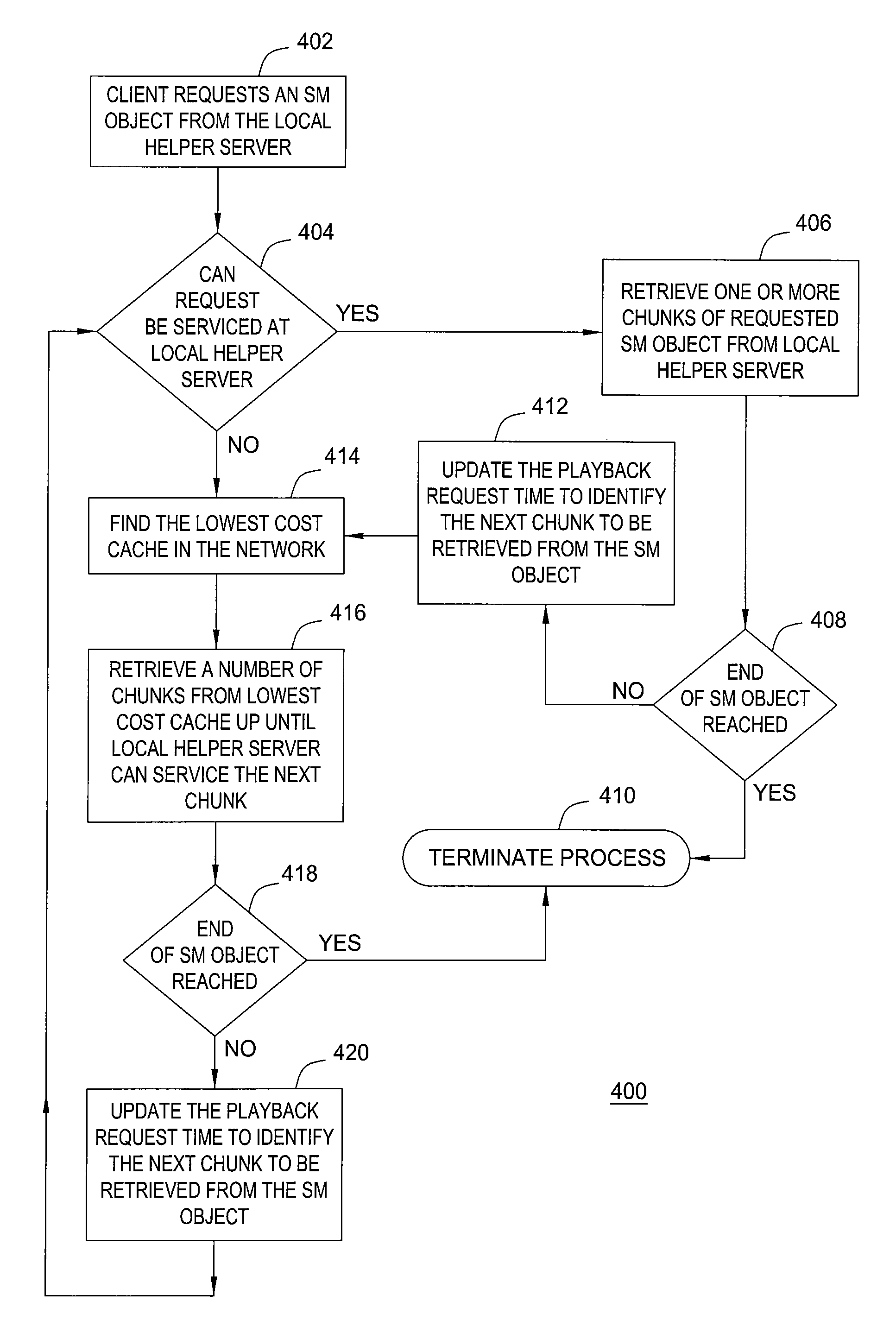Method and system for caching streaming multimedia on the internet
a multimedia and internet technology, applied in the field of network systems, can solve the problems of inability to deliver streaming data, large delay, and relatively easy implementation, and achieve the effects of reducing memory and processing requirements of content providers, improving support for streaming multimedia over the internet, and high quality
- Summary
- Abstract
- Description
- Claims
- Application Information
AI Technical Summary
Benefits of technology
Problems solved by technology
Method used
Image
Examples
first embodiment
[0073]The random approach may be implemented in a number of different embodiments. A first embodiment employs the principles of server push, described above. In the server push random approach, it is assumed that for each globally popular SM object, the sender multicasts the entire SM object as a succession of chunks to all HSs 22-24 in the network 12. Each HS 22-24, however, does not cache the entire SM object on its disk, but rather employs a random algorithm to cache only certain chunks of the SM object. Further, each HS 22-24 keeps an estimate of the total number of HSs 22-24 in the system K, and upon receipt of streaming media object chunks, caches only a fraction of them that is proportional to 1 / K.
[0074]The algorithm utilizes inputs K and A, where K represents the estimated size of the HS caching system, and A is a constant. The algorithm employs a random number generator with a uniform distribution between 0 and 1. Whenever a chunk arrives at a representative HS 22-24, a ran...
second embodiment
[0076]the random approach employs the principles of helper-pull. Recall that helper-pull is characterized by each HS 22-24 individually pulling popular SM objects from the content server 12. In the helper-pull random approach, a HS cluster is defined for a SM object as the set of HSs 22-24 that has requested and has cached the same media object. Each HS maintains an estimate of the size of the HS cluster K′, and upon receipt of media object chunks, caches only a fraction of the chunks that is proportional to 1 / K′. Thus, with high probability the entire object is cached chunk by chunk in a subset of the HS caching system. The algorithm is given as follows: input: K=is the estimated size of the HS cluster; T is the time when the beginning of the stream arrives at the HS; A is a constant and 1≦A<K′, P=A / K′. Use T as the seed for a random number generator with normal distribution between 0 and 1. Whenever a chunk arrives; generate a random number R, and if 0<R<P then cache the chunk; ot...
PUM
 Login to View More
Login to View More Abstract
Description
Claims
Application Information
 Login to View More
Login to View More - R&D
- Intellectual Property
- Life Sciences
- Materials
- Tech Scout
- Unparalleled Data Quality
- Higher Quality Content
- 60% Fewer Hallucinations
Browse by: Latest US Patents, China's latest patents, Technical Efficacy Thesaurus, Application Domain, Technology Topic, Popular Technical Reports.
© 2025 PatSnap. All rights reserved.Legal|Privacy policy|Modern Slavery Act Transparency Statement|Sitemap|About US| Contact US: help@patsnap.com



